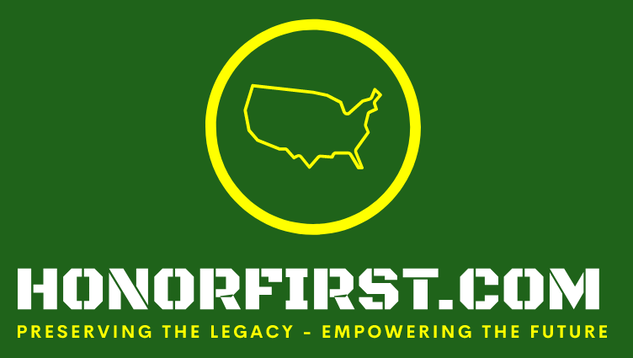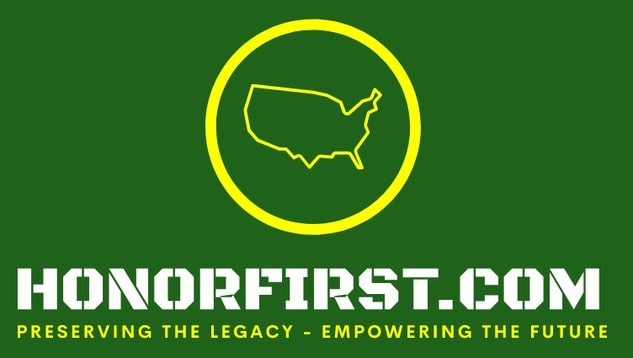September 26 - October 21918
Comments
September 19 - September 251918
Newton-Azrak Award Actions 1992 William C. Spencer Jr. Senior Patrol Agent Buffalo Sector On September 19, 1992, Senior Patrol Agent William C. Spencer Jr. performed a truly remarkable feat of strength, endurance, and bravery to rescue a woman who was seconds from drowning in the swift currents of the Niagara River at Buffalo. After noting the woman’s lack of effort to save herself, and when she slipped beneath the surface and returned in a face down position, Agent Spencer dove into the river, without a floatation device. He swam about 30 yards to her, raised her head out of the water, and administered resuscitation. Agent Spencer then had to support himself and the woman while ladders could be rigged by the Buffalo Fire Department for removal from the water. September 12 - September 181927
Newton-Azrak Award Actions
2017 Felix A. Ortiz Border Patrol Agent Blythe, California Rafael De Leon Border Patrol Agent Blythe, California Juan Zuniga Border Patrol Agent Blythe, California Alberto Lorona Border Patrol Agent Blythe, California Victor H. Herrera Border Patrol Agent Blythe, California Erik Herrera Border Patrol Agent Blythe, California Reyes Fimbres Border Patrol Agent - Intelligence Blythe, California Michael Rosamond Supervisory Border Patrol Agent Blythe, California On September 13, 2017, at approximately 1:20 a.m., Arizona's La Paz County Sheriff s Office called requesting assistance. The Arizona Department of Public Safety had a subject being held at gunpoint subsequent to a traffic stop on Interstate 10 westbound at Mile Marker 57 in Arizona. Shots were fired at the trooper by the driver of a vehicle, who then fled the scene. The trooper remained on scene with one subject at gunpoint, unable to initiate pursuit of the fleeing vehicle. Agents from the Blythe Integrated Targeting Team (ITT) responded to the call for assistance. Supervisory Border Patrol Agent Michael Rosamond assigned Blythe ITT agents to areas he believed the vehicle may be fleeing. Agent Rosamond witnessed a vehicle matching the description of the fleeing vehicle pass his position. Agent Rosamond tried to initiate a vehicle stop; Border Patol Agents Juan Zuniga and Felix Ortiz assisted as secondary/backup agents. The driver failed to yield. Then, the vehicle began to pull to the shoulder, then slow rolled to a stop, in the westbound lanes. As the subject rolled to a stop, the driver exited the vehicle, shooting at the agents approximately four to five times. While under fire and with their vehicle being struck by gunfire, Agent Zuniga was able to return two rounds of fire. The driver fled toward the eastbound lanes on foot and hijacked a big-rig. Agents Zuniga and Ortiz continued the pursuit of the big-rig; Agent Rosamond remained with the vehicle and the driver of the big-rig to secure the scene as evidence. As the driver was absconding in the hijacked big rig there was an exchange of gunfire with Border Patrol Agent Reyes Fimbres on the Exit 17 off-ramp. Blythe ITT Border Patrol Agents Victor Herrera, Erik Herrera, Juan Zuniga, and Felix Ortiz experienced a further exchange of gunfire with the subject on Main Street in Quartzsite, Arizona. At this time the subject was driving the big-rig in reckless regard for public safety, creating the potential of injury, death and significant property destruction. Blythe ITT agents Rafael De Leon and Alberto Lorona arrived on scene to assist. After the final exchange of gunfire, the subject was in custody. Agents rendered first aid on the scene and Emergency Medical Service responded shortly thereafter. Despite their life-saving efforts, the subject succumbed to his injuries while in route to the hospital. September 5 - September 11Documents 1930
1996 - Newton-Azrak Action
Richard B. Holmes Border Patrol Agent McAllen Sector Joseph E. Kempa Border Patrol Agent McAllen Sector Michael W. Richardson Border Patrol Agent McAllen Sector Andrew W. Schutt Border Patrol Agent McAllen Sector Austin L. Skero II - photo Border Patrol Agent McAllen Sector On September 10, 1996, agents from the Brownsville Station came under hostile fire while in performance of their assigned duties. During the encounter, Agent Rodelfo Martinez was wounded on the right arm. His fellow agents, Michael W. Richardson, Joseph E. Kempa, Andrew W. Schutt, Austin L. Skero II, and Richard B. Holmes, were performing line watch duties in an area along the Rio Grande River, approximately seven miles east of the Gateway International Port of Entry at Brownsville, Texas. The agents were working an area notorious for illegal alien and narcotics smuggling. The immediate actions of the agents involved in the fire fight resulted in saving Agent Martinez’s life and not allowing themselves to succumb to the hostilities brought against them during the exchange of gunfire. These agents performed heroic and human acts during an emergency while under extreme stress and displayed exemplary courage under fire. Agents Skero and Holmes were directly in line with the assailants, and Agents Kempa and Martinez and were initially pinned down by gunfire directed at Agents Kempa and Martinez. Bullets were landing all around them in their semi-covered position; however, when the assailants directed their gunfire at Agents Richardson and Schutt, Agents Skero and Holmes, without regard for their personal safety, moved to assist Agents Martinez and Kempa. Agent Holmes took up a position to protect Agents Martinez and Kempa. He assisted Agent Kempa in administering first aid to Agent Martinez. Agent Skero continued to engage the assailants who were still firing at Agents Richardson and Schutt. After the shooting had stopped, Agent Skero returned to assist in administering first aid to Agent Martinez. |
Clifford GillBlog author, retired U.S. Border Patrol Assistant Chief and, current U.S. Border Patrol employee advocate. Ray HarrisSite founder and owner, former Supervisory Border Patrol Agent and retired Immigration Special Agent. Joseph BancoU.S. Border Patrol historian and retired Deputy Chief Patrol Agent. Archives
July 2024
I prefer that you leave comments. However, if you wish to contact me, please do so by emailing [email protected].
|
- Home
-
For USBP Applicants
-
USBP Pages and Links
- Firearms Qualification Course
- Military Time Buy Back
- Station MWRs
- Transitioning Out of the USBP
- Fast & Furious
- U.S. Border Patrol Fallen >
- Honor First and Esprit de Corps
- USBP Photo Galleries
- U.S. Border Patrol History >
- U.S. Border Patrol Honorary Awards
- Upholding Honor First >
- U.S. Border Patrol Authorized Devices
- Border Patrol Stories
- What's Important Now - Academy Podcast
- Badges
- Veterans
- Tips for the Media
- Links
- Acronyms
- Border Patrol Locations
- Sector/Station FaceBook Pages
- Ten Codes
- Online Forums
- Search
- Home
-
For USBP Applicants
-
USBP Pages and Links
- Firearms Qualification Course
- Military Time Buy Back
- Station MWRs
- Transitioning Out of the USBP
- Fast & Furious
- U.S. Border Patrol Fallen >
- Honor First and Esprit de Corps
- USBP Photo Galleries
- U.S. Border Patrol History >
- U.S. Border Patrol Honorary Awards
- Upholding Honor First >
- U.S. Border Patrol Authorized Devices
- Border Patrol Stories
- What's Important Now - Academy Podcast
- Badges
- Veterans
- Tips for the Media
- Links
- Acronyms
- Border Patrol Locations
- Sector/Station FaceBook Pages
- Ten Codes
- Online Forums
- Search


 RSS Feed
RSS Feed
